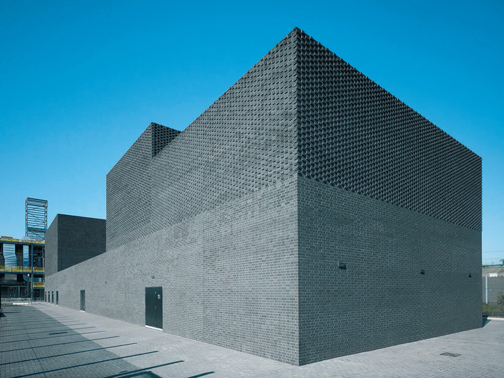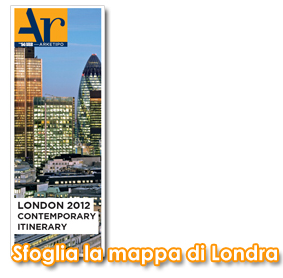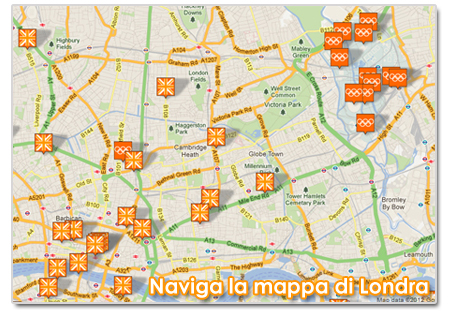Un massivo volume rivestito da 130.000 mattoni a vista color ebano accoglie una delle due sottostazioni elettriche del Parco Olimpico. La differente posa dei blocchi di argilla articola un equilibrio di pieni e di vuoti funzionali alla ventilazione delle due torri di raffreddamento che caratterizza i fronti sia durante il giorno che nella notte. A Stratford, in Kings Yard, è collocata la sottostazione elettrica principale del Villaggio Olimpico di Londra 2012. L'edificio fa parte di un più ampio progetto di sviluppo infrastrutturale dell'area comprendente anche reti di telecomunicazioni, gas, acquedotto e sistema fognario. Inoltre, dato che le strutture sono progettate per funzionare anche dopo la fine dei giochi, la pianificazione infrastrutturale dell'area deve seguire principi di riduzione dell'impatto ambientale, minimizzazione del consumo di risorse non rinnovabili e, in particolare, attenzione al ciclo di vita dell'edificio. L'edificio è stato il primo del Parco Olimpico a essere completato. La centrale è composta da un massivo volume di mattoni a vista, di color ebano, che adotta proporzioni modulari. La forma compatta e il materiale utilizzato conferiscono all'edificio una forte autorità e riflettono, al contempo, la concezione funzionale interna. La tecnica costruttiva in mattoni richiama l'aspetto degli esistenti edifici inglesi di epoca post-industriale e conferisce un carattere "urbano" all'edificio. La trama di pieni e vuoti crea una successione di luci e ombre che fa della centrale un punto di riferimento sia di giorno che di notte, permettendo anche la ventilazione naturale delle torri di raffreddamento. La struttura è accessibile solo a personale tecnico, che si occupa degli impianti in esso contenuti. Tra i materiali impiegati, sono presenti aggregati di recupero da precedenti costruzioni. Nella stratigrafia della chiusura superiore sono presenti frammenti di mattone che richiamano gli edifici circostanti e il tetto crea un habitat per gli organismi viventi, favorendo la biodiversità e la gestione delle acque piovane.
A massive volume clad with 130,000 ebony colour bricks encloses one of the two electric substations on the Olympic Park. The different lay out of the clay bricks articulates a balance of solid and functional voids for the ventilation of the two cooling towers and it characterises the elevations both during the day and night. The main electrical substation of the London 2012 Olympic Park is located in Kings Yard in Stratford. The building is part of a larger infrastructure development project for the area which comprises of communication networks, gas, water supply and sewage systems. Also because the venues are designed to operate even beyond the games the infrastructure planning had to follow the principles of reduction of the environmental impact, of the minimisation of the use of non-renewable sources and in particular the attention to the life cycle of the building. The building was the first one to be completed on the Olympic Park, the construction site started in December 2007 and fi nished in January 2010. The substation is composed of a solid volume made of fair faced ebony bricks and it adopts modular proportions. The compact shape and the material used give to the building a strong authority from the material and visual point of view and reflect at the same time the internal functional concept. The brick construction technology recalls the postindustrial existing british buildings, it gives a urban character to the building. The weave of solid and empty spaces creates a succession of lights and shades which make the substation a reference point both at day and at night also allowing the natural ventilation of the cooling towers. The structure can only be accessed by technical personnel for the maintenance of the plants within. Some of the materials used include aggregates from the reuse of previous constructions. In the layers of the roof there are in particular fragments of bricks which recall the surrounding buildings and the brown colour roof creates a habitat for the living organisms facilitating biodiversity and the recycle of rain water.
scheda progetto
progetto architettonico/architectural design: NORD Architecture
committente/client: EDF Energy and Olympic Delivery Authority (Client Sponsor)
progetto strutture/structure engineer: Andrews Associates
periodo di costruzione/construction period: 24 mesi/months
superficie/area: 1,810 mq
costo/cost: 6,8 milioni euro/8,5 million pounds


















